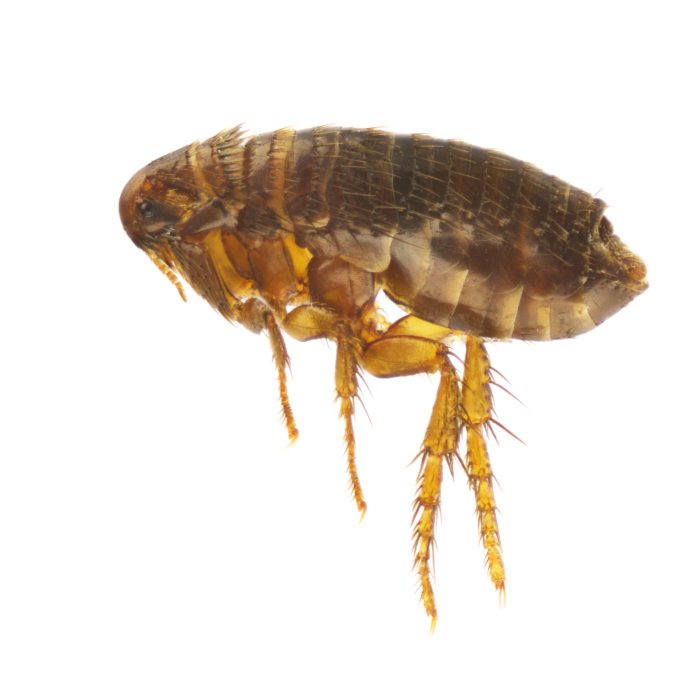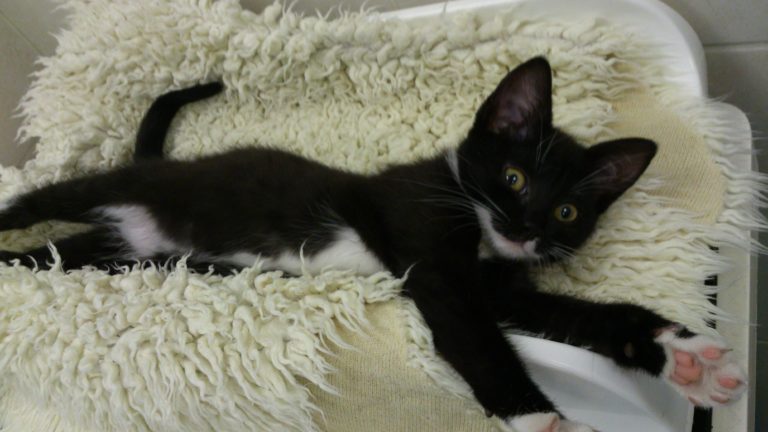This information has been designed to give you a rough guide of what’s required when owning a kitten.
Cats can be independent creatures and make great pets for busy people, but they still need to be looked after. You can expect to share your life with a cat for 16 years or more so taking on a kitten is a big responsibility, not to be taken lightly.
Settling in
When you first bring your kitten home, you should ensure you have the basic items that he/she will need.
• A room or secure place where he can feel safe and away from other pets (somewhere you know he can be left at night or when you go out)
• A comfortable bed or box to sleep in
• A food and water bowl
• A litter tray
• Toys
• A place to hide (An igloo type bed is ideal but an up-turned cardboard box with a kitten-sized opening works just as well)
Try to make a calm, quiet atmosphere for the first introduction to your home. Let him/her come out of the basket into his/her new space in his/her own time. Keep any other pets out of the room while he/she is first exploring.
Show your kitten where the litter tray is (this should be placed as far away as possible from his food and water bowl). Cats instinctively know what they are supposed to do in a litter tray, but it helps if the litter is deep enough to allow the kitten to dig a hole and to be able to completely cover and hide what he/she has done. Insufficient litter will cause cats to spend ages in a litter tray trying to produce the right conditions to go to the loo and be able to cover it up afterwards.
Your family will be excited to meet their new addition but try not to let the situation become too overwhelming. Introducing all the family and other pets is best done gradually over a series of days and always under supervision. Your kitten will grow in confidence and you will soon be able to judge how much you can allow him/her to do. Some cats will be naturally more confident, while others will remain timid. It is important that you allow your kitten to progress in his/her own time.
Take your time when introducing your other pets. As a kitten has recently left their family, they should adjust to other cats relatively easily, however, your adult cats may not be quite as welcoming towards him! Don’t force the issue. Always make sure that there is an escape route, or somewhere to hide for both/all cats. Your adult cats are likely to appreciate a high place to sit and observe.
Vaccinations
The full course of vaccinations for your kitten can start at 8-9 weeks of age and will protect him from Feline Enteritis, Cat Flu and Feline Leukaemia. The full course consists of two injections with a gap of 3 -4 weeks between. A single dose booster once a year is then recommended thereafter to keep up your cat’s level of immunity.
Click here to visit our vaccination page
Flea and worm treatment
Unfortunately, your kitten is likely to bring a few unwanted additions into your home and treatment for fleas and worms is very important. When visiting us for the first time we will provide the appropriate treatment to suit your kitten.
Click here for more information on Parasite Control
Nutrition
At our veterinary practices we stock a wide range of food tailored for your kitten’s life-stage–from weaning, through growth and into adulthood. We recommend dry food, and fresh water should be constantly available.
It is best to make any changes in diet gradually, so always check what food your kitten is used to. The new dry food can be sprinkled on top to make a steady change.
Never give cow’s milk as most cats are intolerant. It can cause diarrhoea which can be very serious in kittens. For recently weaned kittens, specialised kitten milk can be given.
At least four meals a day should be given, reducing to two meals a day by the age of around 6 months.
Neutering
Both male and female cats can be neutered from the age of 4 months.
Neutering (or castrating) a male cat will help prevent him from developing the unwanted characteristics and behaviour of a tom cat. Tom cats are likely to feel the need to mark their territory (which includes inside your home) by spraying urine. Tom cats’ urine has a very strong and unpleasant odour which is very difficult to get rid of. They will also wander much greater distances in search of females and may consequently encounter dangerous situations, such as busy roads and a higher number of other cats wanting to protect their own territory. This can lead to lots of fights. Many un-neutered male cats will be seen in the surgery with infected bite wounds. Neutering your male cat will also ensure he cannot father any unwanted kittens.
Neutering (or spaying) a female cat will of course prevent her from having kittens. Some people would like their cat to have a litter before spaying. We don’t recommend this as it has no health benefits at all and only adds to the number of kittens that need good homes, so please think carefully! Spaying also reduces the risk of uterine infections, which can be fatal. Spaying your cat before she comes into heat provides the best prevention of unwanted litters and uterine diseases.
Click here to visit our neutering page
Microchipping
Microchipping is the best way to identify your cat. A tiny microchip is injected under the skin between the shoulder blades. This chip has a unique number which shows up when scanned. The number is registered along with your details on a national database. If your cat goes astray and is taken to a vet or a rescue centre, they will be scanned and your contact details retrieved.
Microchipping can be done at the same time as vaccinations or neutering.
Click here for more information on microchipping
Insurance
We highly recommend insuring your new kitten. Pet insurance can be used for most illnesses and injuries and allows you to claim your veterinary fees back.
Not all policies are the same, so it can be useful to shop around to help compare the overall value of what is being offered, not just the price. At St Kitts Veterinary Group, we recommend that you take out a lifetime policy to give you the best cover.
Find out more about the importance of pet insurance.
Grooming
Grooming your kitten is a good way to promote bonding. Long-haired cats will require daily grooming throughout their lives to prevent them from becoming matted, so starting young will get them used to it.
Grooming is also a good way to check your cat for any lumps, bumps and wounds that may otherwise go unnoticed. Signs of fleas are easily spotted. Flea dirt shows as small black specks amongst the hair caught in the comb. (If put on a wet piece of tissue, flea dirt will turn a brown/red colour).
Collars
If your kitten wears a collar, please make sure that it is not too loose. Don’t forget as your kitten grows his collar will need to be adjusted.
Good collars to get are the ones that fasten with a plastic clasp that will easily come apart if the collar is caught. This will ensure that your cat does not become trapped or injure themselves by trying to escape from their caught collar. One type of collar that we strongly advise against are the ones with elastic on them. If a cat becomes caught, they often use their paw to try and free themselves. With the elasticated collars, it can expand to allow the paw through, but then becomes trapped under their axilla (armpit), which can cause very nasty injuries. We sell a variety of collars at the practice.
Microchipping is a more reliable way to identify your kitten, with far less potential for problems!
Going outside
If you feel your kitten has settled well in their new surroundings and they are showing an interest in the big outdoors, then you can allow them to explore further. Do not let them outside before they have finished their vaccinations, and once they have done so, it is advised to wait a further 7 days before allowing them to venture outside. Also, take into consideration that un-neutered cats may run off and mate and get into territorial fights, so think carefully before letting them roam before neutering. It is always advised to have your cat microchipped before letting them out, so if they wander off, they can be returned to you.
The right time for their first outdoor adventure can depend on where you live. If you have a secure garden that they will not be able to wander away from you can accompany them outside a week after they have had their full course of vaccinations. This is best done just before they have a meal which will make it easier to encourage them back inside! Just ten minutes or so for youngsters is a good start.
If you are not confident about your garden, you may feel they need to be a bit older, neutered and microchipped before going out. Again, do this before their usual mealtime, early in the day, giving you plenty of time before it gets dark just in case things don’t go to plan. Go outside with them and call them in for food after about ten minutes.
If you have a cat flap, they will need to be shown how it works by gently encouraging them to go through it. Cats pick this up very quickly.
Just be patient and allow plenty of time for your kitten to grow in confidence at his own pace.
Please do not hesitate to contact us if you have any questions.




